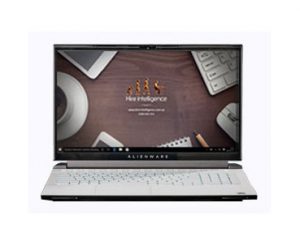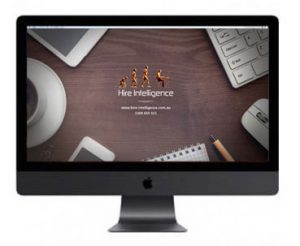Video editing isn’t just for movie makers anymore! Video has become a powerful marketing tool – which means all kinds of businesses are embracing it.
YouTube tutorials, Facebook ads, product videos, Instagram stories, and behind-the-scenes company culture footage are just some of the kinds of video content brands are using to connect with their audiences.
Today, even your average smartphone comes with some basic video editing functionality. But creating really great video content takes a bit more muscle. To be specific, it takes more processing power, memory, and hard drive space than your average laptop or desktop has to offer.
In this article, we’ll show you how to choose the best laptop, desktop, or notebook for video editing – both basic and 4k.
What to consider when choosing a computer for video editing
Laptop or desktop?
Video editing takes a lot of computing power. For years, desktops were the only option, as laptops just didn’t have enough muscle to compete. The arrival of high-performance laptops aimed at gamers (who also want super crisp graphics) forever changed that.
For most users, the portability and versatility of a laptop makes it the preferred option – especially if you’re also using it for other functions. However, if you’re a professional video editor always working from one spot, then there are reasons you may want to consider a desktop. Desktops are easier to upgrade (in terms of storage space and graphics cards) and they generally offer better value for money in terms of power.
Operating System (OS) – Mac, Windows, Linux?
Historically, creative professionals have tended to be die-hard Mac loyalists! This became a self-perpetuating cycle, as entry level designers starting at a new firm almost certainly worked on a Mac, became used to the OS, and one day trained their employees on Macs too.
What’s actually more important than your personal preference, however, is the software you want to use for your video editing. While almost all of the major video editing software programs like Adobe Premier Pro are now compatible with multiple platforms, Apple’s Final Cut Pro is not. If you work with it, you’ll need a Mac.
If you don’t, there is an advantage to going the Windows or Linux route – and that’s if you want power combined with portability. Intel Xeon processors offer significantly more cores than you’ll find on any Mac portable currently available. If you want desktop-equivalent power in a laptop, then Windows is the way to go.
Also note that Pinnacle Studio only works on Windows 10.
CPU / Processor
Videos contain huge amounts of information compared with other types of content. That’s why the single most important feature you should look for in a video editing computer is a powerful processor.
The best laptops for 4k video editing (or higher) are Multi-core Intel i7 or i9s, preferably with at least 4 cores. More is better, but will raise your cost considerably!
Also, keep an eye open for CPUs with multithreading. This means each core can handle two processing threads simultaneously. For really high-end video editing, you’ll want a processor that can support multithreading for eight concurrent threads.
GPU / Graphics Card
While it sounds counterintuitive, a dedicated GPU (Graphics Processing Unit) or graphics card is actually less important than a powerful CPU for video editing. There is one big exception though. If you work on DaVinci Resolve, you will absolutely need one, as the program runs off the GPU rather than the CPU. Another exception is if you also want to use the laptop for gaming, which is where a good graphics card really makes a difference.
Ergonomics
Since video editing is made a lot simpler with keyboard shortcuts to stop and start the action, a comfortable keyboard is very important. A good laptop for video editing should also feature a precision touchpad. Some MacBook Pro models also feature a special added touch bar which some designers and video editors find useful for navigating around design programs.
Display and Screen Size
When choosing the best laptop for editing, a full HD display will usually do the trick. 4k options are available, but you’ll find they have much shorter battery life. If you want to take your laptop on the road with you, a 13-to-14-inch display will allow you to see your work easily while still being a nice portable size. If your video editing laptop stays at home, then a large, high-resolution display between 15 and 17 inches is a good choice.
RAM
Hire Intelligence recommends a minimum RAM of 16GB for HD video editing work. If you’re working in 4k or higher, then that number rises to 32GB. Any less than that and you’ll find your design program lags and overall performance suffers.
Top Tip!If you depend on specific graphic design software, it’s essential to check the provider’s website for their recommended specs. Let’s take a look at some of the most popular video editing software programmes: Adobe Premiere Pro: Widely regarded as the go-to program for filmmakers, both amateurs and professional Hollywood studios alike make use of Adobe Premiere Pro. On their website, you’ll find the minimum and recommended system requirements for running the program.
Pinnacle Studio 25: Pinnacle Studio is widely admired for providing near-pro-level video editing to the average consumer. According to their website, you’ll need the following minimum and recommended system requirements:
Avid Media Composer: Avid Media Composer is well known for its cross-platform flexibility. Their recommended system requirements include:
As you can see, these guidelines provide an excellent starting point in your quest to find the best laptop for video editing! Make sure your software’s requirements match up against the hardware specs of the devices you’re interested in or give us a call for help! |
Rent a desktop or laptop for video editing from Hire Intelligence
Let’s see this process in action using some of our suitable laptops and desktops for video editing.
Remember:
Final Cut Pro is only compatible with Mac laptops and desktops.
Pinnacle Studio is only compatible with Windows 10.
Laptop option: Dell Alienware M17 R2 17-Inch Notebook
What makes this one of the best laptops for video editing:
- Because this laptop is designed for gamers, you already know it will have a great graphics card.
- 8GB Dedicated Video Adapter – exceeds the recommended GPU requirements for Adobe Premiere Pro, which has the highest requirements among the video editors we looked at.
- CPU: Intel Core i9 – more than powerful enough for Avid Media Composer and Pinnacle Studio
Desktop option: Apple iMac Pro 27″ 14 Core Xeon Workstation
What makes this a good desktop for video editing:
- Mac OS – so suitable for Final Cut Pro users
- 8GB Video Ram
- Massive 64GB SDRAM and a 14 core CPU means you’ll have no problem working with even the highest resolutions and frame rates!
Did you know?Hire Intelligence also offers 3D Animation & Post-Production Equipment Rental! So, if you’re looking at producing the latest Hollywood blockbuster, we can assist with state-of-the-art graphics tablets, 28 core workstations, 4K monitors, and more. |
Why choose Hire Intelligence?
In the world of video content, change happens fast! With ever-higher resolutions and more impressive effects being developed all the time, laying out a fortune for tech that will soon be obsolete is a major concern.
Renting rather than purchasing is one of the simplest ways to make sure you always have the very best computer for video editing – without breaking the bank! In addition, you’ll also have the benefit of our years of experience, expert advice, and hassle-free contracts that suit your needs and budget.
Get in touch today, and we’ll help you find the very best laptop for your editing requirements – at a price you’ll love!




